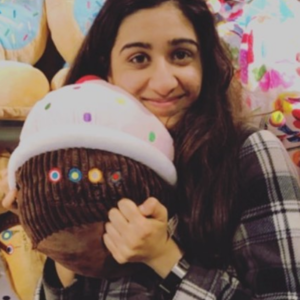There would be no rainbow bagels, Unicorn Frappuccinos, or red velvet cupcakes without our beloved food coloring. Food coloring makes our favorite treats look appealing and makes the world a happier place. But there is some controversy behind both artificial and natural food coloring methods. What is food coloring made of, and is it safe to eat?
A World of Possibilities

Food manufacturers use a thousand and one different ways to color many of our favorite foods. However, all food colorings come from two broad sources. Natural coloring often comes from plants, animals, and other organic material. Artificial colors, on the other hand, are often petroleum-based and tend to be mixed in a lab.
Natural Food Coloring

Natural food coloring is safe to eat and can be used over artificial food coloring to avoid eating too much processed food. Natural dyes have been used for centuries to color food. Some of the most common natural food colorings are carotenoids, chlorophyll, anthocyanin, and turmeric. Many green and blue foods now have matcha, cyanobacteria, or spirulina for color.
What’s In Red Food Dye?

Red food dye gives some of our favorite foods their iconic red color, but it’s not all red velvet cupcakes and rainbows. Much of the red coloring we use in food is natural, but it is made of crushed bugs. Gross, I know.
Many food dyes are made with insects known as cochineal insects, which are often found on prickly pear cacti in the North American deserts. To make red dye, manufacturers dry the cochineals and grind them into a powder. The powder turns a bright red when mixed with water.

As a side note, let me remind you that in 2012, word got out that the crushed-bug dye was in Starbucks’ beloved Strawberries and Creme Frappuccinos. However, Starbucks ditched the dye completely and switched over to lycopene, a natural, tomato-based extract.
But watch out, because cochineal dye is still widely used in the food industry — just check the labels on colored Jell-O packages, candies and yogurts for the following words: carmine, carminic acid or cochineal extract. It’s safe to eat, but do you really want to be eating bugs?
Why Go Artificial?
In some ways it’s better to go artificial with food coloring, but not just to avoid eating bugs. One big reason to go artificial is because it is more cost-effective. Synthetic dyes can be mass-produced at a fraction of the cost of gathering and processing the organic material used to make natural colorings.
Artificial dyes often last longer than natural colors, so they can stay on your shelf for years. Plus there is no limit to the variety of colors that can be artificially produced in a lab.

There is some controversy, though, behind artificial food coloring, as their use has been linked to obesity, cancer, and hyperactivity. However, many artificial dyes are FDA-approved and are completely safe to eat.
Food coloring makes us all happy, but keep an eye out. You may be enjoying some highly processed chemicals or even bugs. But Hakuna Matata, you know?


